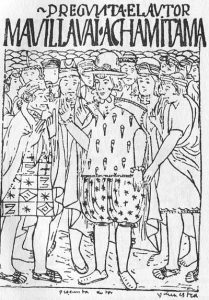By Prof Natalia Perea-Sobrevilla
In March this year, as events moved quickly and we went into lockdown, I wrote a piece for Peruvian newspaper El Comercio where I contribute regularly. I reflected on how humanity has coexisted with disease since the dawn of times and that throughout centuries through trial and error we have learnt how to deal with them. One of the most devastating episodes in the history of pandemics was when Europeans brought to the Americas illnesses for which the local populations had no immunity to. Having experienced the black death, and coexisted with smallpox, measles and the common cold, those who came to America were resilient to many ailments. They came in contact with populations that had no immunity, those in the Caribbean islands were completely obliterated. In the mainland the effects were not less shattering. Disease ravaged, empires such as the Aztec and the Inca were destabilised by the sudden, inexplicable death of so many. Illnesses arrived in Peru even before the conquistadors, as trade routes through the Pacific interconnected the coasts of present-day Nicaragua and Peru. Equally, when the English and French explorers arrived in North America entire populations had already succumbed to illness. A pattern that was then repeated in the Pacific Islands a couple of centuries earlier.
In May I was invited to contribute to a documentary on the history of pandemics to discuss the experience of the people in the Americas and the impact of illness during colonisation. Although it is impossible to ascertain the exact numbers of people that died, the impact that these diseases had is hard to exaggerate. The process resembles what happens now as the population exposed has no immunity, they are highly contagious, and there are no medical interventions against them. Today we deploy non-medical interventions like quarantine, but given this is the bluntest instrument in the arsenal to fight epidemics, the social and economic costs are exorbitant. It is also evident that today, like in the past, those who pay the highest price are the poor and vulnerable. This is particularly evident in the case of Peru, the place that I study, as very few can afford to properly quarantine and the number of infections has soared, in spite of the government’s efforts to curtail it. The past is useful to understand the present because we can see the similarity in processes and learn from them.
Image attribution: By Felipe Guamán Poma de Ayala – www.cervantesvirtual.com, Public Domain, https://commons.wikimedia.org/w/index.php?curid=3368781

